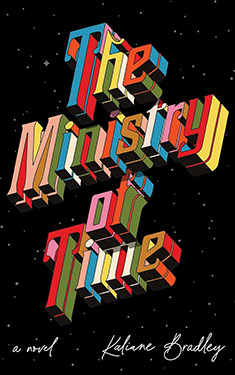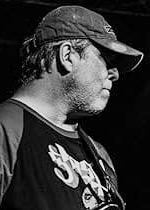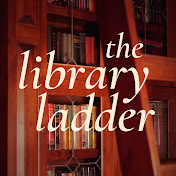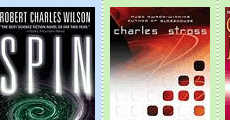Science Fiction, Fantasy & Horror Sub-Genres
There are many different sub-genres in SF/F/H literature. We've created the lists below as an integral part of our BookTrackr™ feature. You can search for books by a specified sub-genre which makes it easy to find similar books to the ones you like or you can find new books in different sub-genres that you've not tried before.
Since most books have elements of many different sub-genres we allow our members to choose up to three that they think best fit each work. The top 3 sub-genre choices from all members are displayed at the top of the book page. These serve as the basis for our sub-genre search.
Science Fiction Sub-Genres
Alien Invasion
The alien invasion is a common theme in science fiction stories and film, in which a technologically-superior extraterrestrial society invades Earth with the intent to replace human life, or to enslave it under a colonial system, or in some cases, to use humans as food.
Alternate History (SF)
Alternate history or alternative history is a subgenre of speculative fiction (or some would say of science fiction) that is set in a world in which history has diverged from history as it is generally known; more simply put, alternate history asks the question, "What if history had developed differently?" Most works in this genre are set in real historical contexts, yet feature social, geopolitical or industrial circumstances that developed differently or at a different pace from our own. While to some extent all fiction can be described as alternate history, the subgenre proper comprises fiction in which a change or point of divergence happens that causes history to diverge from our own.
Alternate/Parallel Universe
Parallel universe or alternate reality in science fiction and fantasy is a self-contained separate reality coexisting with our own. This separate reality can range in size from a small geographic region to an entire new universe, or several universes forming a multiverse. While the terms "Parallel universe" and "alternate reality" are generally synonymous and can be used interchangeably in most cases, there is sometimes an additional connotation implied with the term "alternate reality" that implies that the reality is a variant of our own. The term "parallel universe" is more general, without any connotations implying a relationship (or lack thereof) with our own universe.
Apocalyptic/Post-Apocalyptic
Apocalyptic science fiction is a sub-genre of science fiction that is concerned with the end of civilization, through nuclear war, plague, or some other general disaster.
Post-apocalyptic science fiction is set in a world or civilization after such a disaster. The time frame may be immediately after the catastrophe, focusing on the travails or psychology of survivors, or considerably later, often including the theme that the existence of pre-catastrophe civilization has been forgotten or mythologized. Post-apocalyptic stories often take place in an agrarian, non-technological future world, or a world where only scattered elements of technology remain.
There is a considerable degree of blurring between this form of science fiction and that which deals with false utopias or dystopic societies. A work of apocalyptic or post-apocalyptic fiction might also be called a ruined Earth story, or dying Earth if the apocalypse is sufficiently dire.
Artificial Intelligence
Artificial intelligence (AI) is a branch of computer science that deals with intelligent behavior, learning and adaptation in machines. Research in AI is concerned with producing machines to automate tasks requiring intelligent behavior. Examples include control, planning and scheduling, the ability to answer diagnostic and consumer questions, handwriting, speech, and facial recognition. As such, it has become an engineering discipline, focused on providing solutions to real life problems. AI systems are now in routine use in economics, medicine, engineering and the military, as well as being built into many common home computer software applications, traditional strategy games like computer chess and other video games.
Climate Fiction (Cli-Fi)
Climate fiction, or cli-fi, is science fiction that deals with the reality of climate change and global warming. Works generally take place in the world as we know it or in the near future and often include dystopian or utopian themes. These works imagine potential futures based on humanity's response to the impacts of climate change on our physical world and society at large.
Colonization
Colonization is the act where life forms move into a distant area where their kind is sparse or not yet existing at all and set up new settlements in the area. Colonisation applies to all life forms in a sense though it is most often used in reference to insects and humans. Insect colonisation varies from species to species though it most often involves a queen setting out from its parent colony and establishing a colony of her own at a suitable location.
Human colonisation is not to be confused with colonialism or imperialism, as colonisation is a broader category, encompassing all large-scale immigrations of an established population to a 'new' location, and expansion of their civilisation into this area. This process may or may not victimise an indigenous population (depending first on whether there is any indigenous population to victimise).
Cyberpunk
Cyberpunk is a sub-genre of science fiction, noted for its focus on "high tech and low life" and taking its name from the combination of cybernetics and punk. It featured advanced technology such as computers or information technology coupled with some degree of breakdown in the social order. "Classic cyberpunk characters were marginalized, alienated loners who lived on the edge of society in generally dystopic futures where daily life was impacted by rapid technological change, an ubiquitous datasphere of computerized information, and invasive modification of the human body."
Dying Earth
The Dying Earth subgenre is a sub-category of science fantasy which takes place at the end of Time, when the Sun slowly fades and the laws of the Universe themselves fail, with the science becoming indistinguishable from magic. More generally, the Dying Earth sub-genre encompasses science fiction works set in the far distant future in a milieu of stasis or decline. Themes of world-weariness, innocence (wounded or otherwise), idealism, entropy and the hope of renewal tend to pre-dominate.
Dystopia
Dystopian fiction is the opposite of Utopian: creation of a nightmare world, sometimes also described as "the victory of forces of reason over forces of kindness".
First Contact
First contact is a common science-fictional theme about the first meeting between humans and aliens, or, more broadly, of any sentient race's first encounter with another one.
Galactic Empire
Galactic empires are a fairly common theme in science fiction. Many authors have either used a galaxy-spanning empire as background, or written about the growth or decline of such an empire. The capital of a galactic empire is frequently a core world. Some of these empires are clearly based on the Roman Empire; the Galactic Empire of Isaac Asimov's Foundation series (which inspired empires of later writers and film-makers) being an obvious example. The best known to the general public today is probably the empire from Star Wars, which was formed in turn from the Galactic Republic.
Generation Ship
A generation ship is a hypothetical type of starship that would travel much slower than light across great distances between stars (see interstellar travel). Since such a ship might take thousands or tens of thousands of years to reach even nearby stars, the original occupants would die during the journey, leaving their descendants to continue traveling.
It is estimated that, in order to assure genetic diversity during a centuries-long trip, any generation starship would require at least 500 inhabitants (though this could also be achieved for a much smaller crew through the use of sperm banks or egg banks brought along for the journey). Additionally, the ship would have to be almost entirely self-sustaining (see Biosphere, life support) so as to provide food, air, and water for everyone on board. It must also have extraordinarily reliable systems that would not fail even over long periods of time, or alternately that could be repaired by the ship's inhabitants if they did.
Hard SF
Hard science fiction, or hard SF, is a subgenre of science fiction characterized by an interest in scientific detail or accuracy, being the opposite of soft science fiction. It is one of several science fiction themes.
There is a great deal of disagreement among readers and writers over what exactly constitutes an interest in scientific detail. Many hard SF stories focus on the natural sciences and technological developments, but many others leave technology in the background. Others contend that if the technology is left in the background it is an example of soft science fiction. Another distinction within the genre revolves around portrayals of the human condition. Some authors seek to reflect technical accuracy within an advanced, nearly utopian society in which mankind has attained victory over most human ills; others seek to portray the impact of technology on the human race with human defects still firmly in place and sometimes even magnified.
Human Development
Human development fiction predicts future capabilities evolved by mankind, such as enhanced mental or physical abilities.
Immortality
Immortality (or eternal life) is the concept of existing for a potentially infinite, or indeterminate, length of time. Throughout history, many humans have had the desire to live forever. What form an unending or indefinitely-long human life would take, or whether it is even possible, has been the subject of much speculation, fantasy, and debate.
Light/Humorous SF
Light/humorous science fiction may occur within any of these subgenres, or (often) spoof a subgenre. Douglas Adams' Hitchhiker's Guide to the Galaxy is one of the best-known examples of humorous science fiction.
Military SF
Military science fiction is a subgenre of science fiction where interstellar or interplanetary conflict and its armed solution (war) make up the main or partial backdrop of the story. Such war is usually shown from the point of view of a soldier. In general, a detailed depiction of conflict forms the basis of most works of military science fiction. The main characters are often part of the military chain of command.
Mind Uploading
In transhumanism and science fiction, mind transfer (also referred to as mind uploading or mind downloading, depending on one's point of reference), whole body emulation, or electronic transcendence refers to the hypothetical transfer of a human mind to an artificial substrate.
Mundane SF
Mundane SF focuses on stories set on or near the Earth, with a believable use of technology and science as it exists at the time the story is written.
Mutants
The idea of a mutant is a common trope in comic books and science fiction. The new phenotypes that appear in fictional mutations (who often have superpowers) generally go far beyond what is typically seen in biological mutants, and often result in the mutated life form exhibiting superhuman abilities.
Mythic Fiction (SF)
The mythic fiction sub-genre refers to titles rooted in fables or mythology. The works are, ultimately, inspired by, or that in some way draws from the tropes, themes and symbolism of myth, folklore, and fairy tales. These could be pantheon-based characterisations, or retellings of famous mythological journeys in SF/ F settings. Neil Gaiman and John Crowley are masters of this sub-genre.
Nanotechnology
Nanotechnology is the design, characterization, production and application of structures, devices and systems by controlling shape and size on the nanoscale. Eight to ten atoms span one nanometer (nm). A human hair is approximately 70,000 to 80,000 nm thick. Nanotechnology has been put to practical use for a wide range of applications, including stain resistant pants, enhanced tire reinforcement and improved suntan lotion.
Near-Future
Near-future science fiction takes place in the present day or in the next few decades. Elements of the setting should be familiar to the reader, and the technology may be current or in development. Stories about nanotechnology or genetics, such as Greg Bear's Blood Music, often fall into this category.
Pulp
Pulp magazines (or pulp fiction; often referred to as "the pulps") were inexpensive fiction magazines. They were widely published from the 1920s through the 1950s. The term pulp fiction can also refer to mass market paperbacks since the 1950s.
Robots/Androids
Biorobotics is a term that loosely covers the fields of cybernetics, bionics and even genetic engineering as a collective study.
Biorobotics is often used to refer to a real subfield of robotics: studying how to make robots that emulate or simulate living biological organisms mechanically or even chemically. The term is also used in a reverse definition: making biological organisms as manipulatable and functional as robots.
In the latter sense biorobotics is referred to as a theoretical discipline of comprehensive genetic engineering in which organisms are created and designed by artificial means. The creation of life from non-living matter for example, would be biorobotics. Because of its mostly theoretical status it is presently limited to science fiction; the actual field is in its infancy and is known as synthetic biology and Bionanotechnology.
Science-Fantasy
This sub-genre is a fusion between the two main genres. It represents works that use main elements of both to create a story that is (for example) futuristic and technical in tone, with fantastical sub-plots and characters. Arthur C. Clarke once said, "any sufficiently advanced technology is indistinguishable from magic", which might make the sub-genre easier to identify! Some would argue that there are even "sub-genres for the sub-genre" in this category, but for our purposes we will stick with the high-level definition given here! Anne McCaffrey's "Pern" novels are good examples of this sub- genre.
Singularity
In futures studies, a technological singularity (often the Singularity) is a predicted future event believed to precede immense technological progress in an unprecedentedly brief time. Futurists give varying predictions as to the extent of this progress, the speed at which it occurs, and the exact cause and nature of the event itself.
Slipstream
Slipstream deals with "mainstream" themes but contains a speculative element. Margaret Atwood's The Handmaid's Tale is set in a speculative future, for example, but is marketed as a mainstream novel.
Soft SF
Soft Science Fiction involves the less exact sciences, such as sociology, psychology, or anthropology. One excellent example of advanced sociology would be the science of "psychohistory" described in Asimov's Foundation series
Space Exploration
Space exploration is the physical exploration of outer space. The politics, science, and engineering behind space flight all fall under the auspices of space exploration. There are many rationales behind space exploration; among the most common are ones focusing on scientific research or the future survival of humanity. This endeavour has been to some degree a dream and goal of humanity for the past several centuries, but it was not until the development of large liquid-fueled rocket engines during the early 20th century that it really began to be seriously developed.
Space Opera
A space opera is usually set in outer space or on a distant planet. In most cases, to keep the story fast moving, a spaceship can fly almost unlimited distances in a short time, and can turn on a dime, without the boring necessity of decelerating. The planets usually have earthlike atmospheres (Earth's moon is an exception) and exotic life forms. Aliens usually speak English, sometimes with an accent. The machinery of space opera often includes (in addition to spaceships) ray-guns, robots, and flying cars.
Space opera backgrounds may vary considerably in scientific plausibility. Most space operas conveniently violate the known laws of physics by positing some form of faster-than-light travel. Many space operas diverge even more from known physical reality, and not uncommonly invoke paranormal forces, or vast powers capable of destroying whole planets, stars, or galaxies.
Steampunk
Steampunk is a sub-genre of science fiction that refers to works set in an era where steam power is still widely used — usually the 19th century, and often Victorian era England — but with technological inventions like those found in the works of H. G. Wells and Jules Verne. Steampunk contains alternate history-style elements of past technologies like dirigibles or mechanical computers combined with futuristic technologies like multi-function goggles, giant robots and ray guns.
Terraforming
Terraforming (literally, "Earth-shaping") is the theoretical process of modifying a planet, moon, or other body to a more habitable atmosphere, temperature, or ecology. It is a type of planetary engineering. The term is sometimes used broadly as a synonym for planetary engineering in general. The concepts of terraforming are rooted both in science fiction and actual science. The term was probably coined by Jack Williamson in a science-fiction story published in 1942 in Astounding Science Fiction[1], but the actual concept pre-dates this work. Olaf Stapledon's Last and First Men (1930)[2] provides an example in fiction in which Venus is modified after a long and destructive war with the original inhabitants, who naturally object to the process.
Theological
Theological works often present explanations or commentary on religion and religious ideas. These vary from simple refutations of religion as primitive or unscientific, to creative explanations and new insights into religious experiences and beliefs (e.g. Gods as aliens, prophets as time travelers, metaphysical or prophetic vision gained through technological means, etc.).
Like any form of literature, SF can be used both to denounce and promote religious ideologies, and SF authors' opinions on the subject of religion are as diverse as their writing.
As an exploratory medium, SF rarely takes religion at face value by simply accepting or rejecting it. As with any topic in SF, when religious themes are present they tend to be investigated very deeply. The reader is invited to step outside the conventional understanding of the subject and consider wider possibilities.
Also, since the genre deals explicitly with humanity's understanding of itself in the face of great technological and social change, in a certain sense most SF grapples with questions of a spiritual or religious nature.
Time Travel
Time travel is the concept of moving backward or forward to different points in time, in a manner analogous to moving through space. Additionally, some interpretations of time travel suggest the possibility of travel between parallel realities or universes.
Uplift
In science fiction, biological uplift is a common but by no means universal term for the act of an advanced civilization helping the development of another species by bringing a non-sapient one into sentience, or by giving a sapient one spacefaring capabilities. The best-known use of the term is in David Brin's Uplift series, which may have popularized it. Orion's Arm uses the term provolve to avoid possible copyright issues with David Brin.
Uplifting also refers to the theoretical prospect of endowing non-human animals with greater capacities, including and especially increased intelligence. It is highly likely that biological uplifting would be accomplished through the application of genetic and transgenic technologies, and possibly even artificial intelligence.
Utopia
Utopian fiction is the creation of an ideal world as the setting for a novel.
Virtual Reality
Virtual reality (VR) is a technology which allows a user to interact with a computer-simulated environment. Most virtual reality environments are primarily visual experiences, displayed either on a computer screen or through special stereoscopic displays, but some simulations include additional sensory information, such as sound through speakers or headphones. Some advanced and experimental systems have included limited tactile information, known as force feedback. Users can interact with a virtual environment either through the use of standard input devices such as a keyboard and mouse, or through multimodal devices such as a wired glove, the Polhemus boom arm, and/or omnidirectional treadmill. The simulated environment can be similar to the real world, for example, simulations for pilot or combat training, or it can differ significantly from reality, as in VR games.
Weird (SF)
China Miéville, a practitioner of New Weird writing describes it this way: "The fact of the weird is the fact that the worldweave is ripped and unfinished. Moth-eaten, ill-made. And through the little tears, from behind the ragged edges, things are looking at us."
Weird writing tends to blur the genre boundaries of science fiction, fantasy, and horror. Weird science fiction takes the familiar tropes of science fiction – space travel, first contact, time travel, etc. – and places them within the ripped, unfinished, and ill-made world that Miéville proposes.
Fantasy Sub-Genres
Alternate History (Fantasy)
A retelling of historical events where magic or other elements of fantasy are involved.
Comic Fantasy
The Comic Fantasy sub-genre has, at its heart, one characteristic: humor. Whether as a sarcastic takeoff of an existing classic ("Bored of the Rings," by Henry N. Beard and Douglas C. Kenney) or a light-hearted romp through a new hilarious world ("A Spell for Chameleon" by Piers Anthony), these stories are funny plot-lines in a fantasy setting. Terry Pratchett is undoubtedly one of the masters of this sub-genre.
Contemporary Fantasy
This sub-genre is also known as modern-day or indigenous fantasy. These terms are used to describe stories set in the "real world" (often referred to as consensus reality) in contemporary times, in which, it is revealed, magic and magical creatures secretly exist, either living in the interstices of our world or leaking over from alternate worlds. It thus has much in common with, and sometimes overlaps with, the "secret history," a work of fantasy in which the magic could not remain secret does not fit into this sub-genre. Occasionally certain contemporary fantasy novels will also make reference to pop culture. J.K. Rowling's works are good examples, with their backdrop setting of modern-day England.
Dark Fantasy
Stories that focus on elements usually found in the horror genre but which take place in a setting more alike sword and sorcery or high fantasy.
Fairytale Fantasy
Fairytale fantasy is distinguished from other subgenres by the works' heavy use of motifs, and often plots, from folklore. They sometimes ignore the standards of world-building common to fantasy as blithely as the tales from which they derive, though not always; stories that use a high fantasy, contemporary, or historical setting, with the world-building thus entailed, may also be considered part of those genres.
Fantasy of Manners
This sub-genre may sound unfamiliar, but we've probably all encountered it in the past. It is the fantasy equivalent of the mainstream sub-genre, "Comedy of Manners," which focuses on or satirises the manners and affectations of a social class, often represented by stock characters, the fop and the rake during the Restoration, or an old person pretending to be young. For example, what if the characters in the movie "Gosford Park" had magical powers or other-worldly servants? Ellen Kushner excels in this sub-genre, as does Terry Pratchett.
Heroic Fantasy
Heroic fantasy is a sub-genre of fantasy literature which chronicles the tales of heroes and their conquests in imaginary lands. Stories tend to be intricate in plot, often involving many peoples, nations and lands. Grand battles and the fate of the world are common themes, and there is typically some emphasis on a universal Good versus Evil conflict.
High Fantasy
The term high fantasy (also epic fantasy) generally refers to fantasy that depicts an epic struggle between good and evil in a fantasy world, whether independent of or parallel to ours. The moral concepts in such tales take on objective status, and are not relative to the one making the judgement.
Historical Fantasy
This sub-genre is very similar to the "Alternate History" sub-genre. It is a subgenre in which stories are set in a specified historical period but with some element of fantasy added to the world, such as magic or a mythical creatures or characters. Often the magic retreats from the world so as to allow history to continue unaltered. When the plot alters history, as it were, the story moves into the Alternate History sub-genre.
Juvenile Fantasy
The juvenile fantasy sub-genre is a fantasy story written for a younger audience, with appropriately younger characters, i.e. children or teens who have unique abilities, gifts, possessions or even allies. The classic example of the sub-genre is C.S. Lewis' Chronicles of Narnia. In the earlier part of the 20th century, C.S. Lewis noted that fantasy was more accepted in juvenile literature, and therefore a writer interested in fantasy often wrote in it to find an audience.
Low Fantasy
Low Fantasy is a sub-genre which stresses the grittier, grimmer, more unattractively realistic themes in a fantasy setting. It sometimes refers to stories that don't emphasise magic overtly, or stories that contain a cynical world view. If J. R. R. Tolkien's The Lord of the Rings exemplifies "High Fantasy,", then Low Fantasy is perhaps more easily viewed. This genre would perhaps deal more with drugs, prostitution, street crime, etc. Another view would be Robert E. Howard's Conan the Barbarian series. These stories take place in a pseudo-historical setting and, while they contain powerful examples of magic, fantasy elements are rare and dangerous with no fantasy species, such as elves or dwarves, at all.
Magical Realism
Magical Realism presents fantastic and mundane elements side-by-side as if there is no conflict between the two. It is often used to punctuate the hidden meaning of mundane realities by means of the fantastic "magical" elements. This sub-genre has close ties to Surrealism and Post-Modernism.
Mythic Fiction (Fantasy)
The fantasy sub-sub-genre of mythic fiction, similar to its twin in the Science Fiction category, refers to titles rooted in fables or mythology. The works are, ultimately, inspired by, or that in some way draws from the tropes, themes and symbolism of myth, folklore, and fairy tales. These could be pantheon-based characterisations, or retellings of famous mythological journeys in fantasy settings. This sub-genre also overlaps with "Mythpunk," a kind of postmodern mythic fantasy category. Charles de Lint and Louise Erdich are good examples of authors adept at the Mythic Fiction vein.
Romantic Fantasy
The Romantic Fantasy sub-genre is fairly obvious... fantasy story-lines heavily if not completely devoted to love and romantic entanglements. The protagonists are sometimes, but not always, warriors of either gender seeking to right wrongs/ on a quest or journey, and are then enveloped by a blossoming relationship/ flirtation. Mercedes Lackey has been offered as an example of Romantic Fantasy author.
Superhero Fantasy
Where does the fantasy story start, and the comic book end? As with many of these sub-genres, this category has more than its share of grey area. The Superhero Fantasy has, at its heart, characters with super powers and/ or unusual abilities. The heros and villains act out many of the same roles as you'd find in a comic book story line, only in a fantasy setting. George R.R. Martin's "Wildcards" series is a good example of this sub-genre.
Sword and Sorcery
This sub-genre is the bread and butter, some would say, of the Fantasy genre itself. And examples surely abound of award-winning novels replete with the hack and slash/ spells-a-flying plot lines. These types of stories usually include (with notable exceptions) sword-play, magic, and a modicum of medieval-brand adventure. One does not have to look far to find outstanding examples of this type of story, with authors such as J.R.R. Tolkien, Fritz Leiber, and Robert E. Howard.
Urban Fantasy
Urban fantasy is a sub-genre of fantasy defined by place; the fantastic narrative has an urban setting. Many urban fantasies are set in contemporary times and contain supernatural elements. However, the stories can take place in historical, modern, or futuristic periods, as well as fictional settings. The prerequisite is that they must be primarily set in a city.
Weird (Fantasy)
Robin Anne Reid, author of Women in Science Fiction and Fantasy: Overviews, says of weird fantasy, "a general consensus uses the [weird]" to describe fictions that "subvert cliches of the fantastic in order to put them to discomfiting, rather than consoling ends". It is true of most weird writing that the genre boundaries of science fiction, fantasy, and horror become blurred.
Horror Sub-Genres
Demons
Demons are supernatural entities that are typically depicted as malicious creatures who either create fear and violence or attempt to coerce or lure humans into doing evil. Demons are similar to devils, and may even be described as originating from Hell.
Fairytale Horror
In early versions of the stories, the Pied Piper led the children to drown, Red Riding Hood was devoured and digested, and the Little Mermaid died in the sea. Not all fairy tales are for kids. Also stories of little, winged fairies who are not pleased with human company.
Ghosts
Ghosts are supernatural entities which are the incorporeal spirits of deceased persons (although sometimes ghosts may also represent deceased animals). Ghosts are often associated with paranormal activity, including cold spots, glowing orbs, and objects that seem to move by themselves. Belief in ghosts is found in virtually every culture on earth, and throughout the history of literature and art.
Gothic
The early precursor to the Horror genre, the Gothic novel tells tales of mysteries, forbidden loves, ruined castles, moral decay, fallen aristocracies, madmen, and various sorts of spirits.
Humorous Horror
Humorous horror is a form of black humor which combines horror and comedy. It may take the form of parody, pastiche, or be completely original.
Lovecraftian/Cthulhu Mythos
Much of H. P. Lovecraft's fiction revolved around the notion that our world was originally ruled by alien beings which now exist out of our sight, waiting for the time to return and destroy humanity. The Cthulhu Mythos is any work of horror fiction which involves any of the "Elder Gods" created by Lovecraft.
Man-Made Horrors
Man-made horrors are non-supernatural creatures or situations which are either produced by man or a by-product of industry or technology. Mary Shelley's Frankenstein (1818) is the first great story of a man-made horror, but man-made horrors are not limited to creatures produced by mad scientists - they can also be genetically created viruses, toxic pollution, or mutated animals (among others). Man-made horrors may involve science fictional elements, but the distinctive element is an intent to create fear.
Monsters
Monsters are creatures that are typically malevolent, although they sometimes act violently in response to persecution; they're usually supernatural, but not always. Vampires, werewolves, and zombies all fall into the broader category of monsters, but monsters need not be confined to these types—they can also include other shapeshifters, aquatic menaces (mermaids or gillmen), cryptozoological animals (Bigfoot, the chupacabra, the Loch Ness monster), or unnaturally evolved animals (King Kong). The term "monster" is also occasionally applied to deformed humans such as The Phantom of the Opera or The Hunchback of Notre Dame.
Mythic Fiction (Horror)
Horrific tales told in the backdrop of ancient mythology and folklore. Pagan pantheons of gods and nature spirits (e.g., nymphs and banshees) frequent this subgenre.
Occult
Stories of witchcraft, wizardry, Satan worship, esoteric brotherhoods, and the general communion with evil or morally ambiguous spirits.
Post-Apocalyptic Horror
Post-apocalyptic horror typically presents an end-of-the-world scenario in which some sort of event has destroyed most of the world's population, leaving only a few survivors to battle for diminishing resources. Post-apocalyptic horror may verge on science fiction, presenting post-nuclear holocaust or other man-made situations, but emphasizes the horror of the protagonist's situation.
Psychic Abilities
Psychic abilities are often presented at the center of horror novels. Psychic abilities may include telekinesis, ESP, mind control, pyrokinesis, and other abilities. Horror novels focusing on psychic abilities frequently present children as the possessors of these unique powers. Science fiction works may also employ the use of psychic abilities, but in these works it's usually the protagonist - not the antagonist - who possesses these powers, and the intent is not to produce fear.
Psychological
Psychological horror is horror in which the antagonists are non-supernatural. Psychological horror most commonly involves the serial killer, but may also refer to the protagonist's state of mind (as in Stephen King's Cujo). Psychological horror is close to the thriller or mystery novels, but is differentiated by focusing more on producing fear rather than resolving a mystery.
Splatterpunk
A revolt against the subtly suggestive Gothic novel, Splatterpunk ratchets the gore up to eleven with as much violence and graphic description as it can muster.
Vampires
Vampires are supernatural creatures that are reanimated corpses who survive by drinking the blood of the living. Vampires are found in nearly every culture in the world, and vampire variants include the lamia from Greece, the wurdalak from Russia, and the goong-si (or "hopping vampire") from China. Prior to the 19th century, in Europe vampires were generally thought to be foul, ragged creatures that rose at night from their graves to stalk their victims (who were often family members). However, the 19th century concept of the vampire changed radically thanks to literature, with the most important works being Dr. John Polidori's 1819 short story "The Vampyre" (which created the character of "Lord Ruthven") and Bram Stoker's 1897 novel Dracula. Stoker's work in particular added the vampire's ability to shapeshift (especially into a vampire bat), the vampire's use of erotic seduction, and the use of a stake through the heart to slay the creature.
Weird (Horror)
Here's H.P. Lovecraft on the weird tale: An atmosphere of breathless and unexplainable dread of outer, unknown forces must be present; a hint of that most terrible conception of the human brain - a malign and particular suspension of defeat of those fixed laws of nature what are our only safeguard against the assaults of chaos and the daemons of unplumbed space.
But what about the New Weird? According to Robin Anne Reid, NW consists of fictions that "subvert clichés of the fantastic in order to put them to discomfiting, rather than consoling ends". It is also writing that tends to blur the genres of sf, fantasy, and horror.
Werewolves
Werewolves are supernatural creatures that are humans by day, but are afflicted with lycanthropy and shapeshift into monstrous wolf-like creatures at night (typically by the light of the full moon). Werewolves are one type of shapeshifter; other shapeshifting entities might transform into other animals, or even non-organic objects.
Witches
Witches are typically portrayed as aged women with tall, pointed hats, possibly bent over a cauldron, holding a broomstick, or accompanied by a black cat; they cause mischief and havoc by casting spells. However, witches may also be young or male (although male witches may be referred to as sorcerers), and may be good rather than evil.
Zombies
Zombies are supernatural creatures which are re-animated corpses that lack intelligence and self-awareness. Prior to 1968, zombies were associated with Haitian voodoo practices, and were often corpses of the recently deceased that were brought back to life by a voodoo practitioner to perform manual labor (usually on a plantation). However, in 1968 George Romero's influential film Night of the Living Dead redefined the zombie as a reanimated corpse that seeks to eat the living. Unlike vampires, zombies are not confined to appearing only at night, and they are not affected by religious icons such as crucifixes and holy water; in fact, post-1968 zombies usually can only be stopped by damaging the brain (usually with gunshots).



















 Full Details
Full Details



